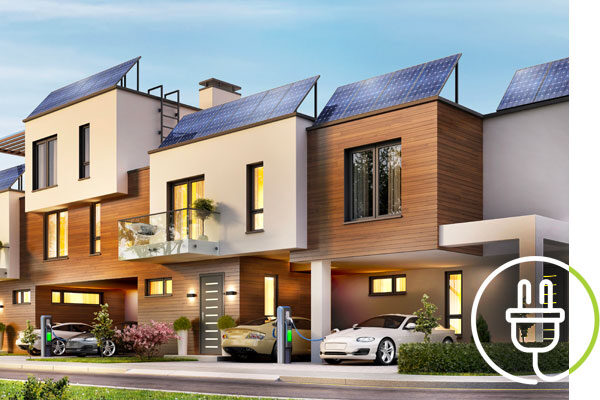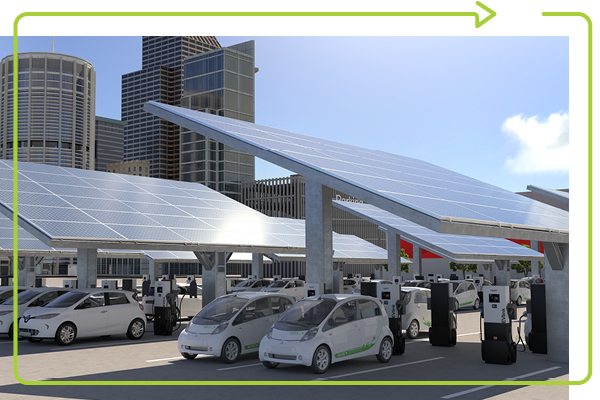Electric Uprising: Schneider Electric—EVs’ starring role in an all-electric world
Part 5 of a story in five parts about the transition to electric vehicles


Some energy experts believe that EVs could be much more than simply a replacement for the passenger car: They could, in fact, be part and parcel of a much larger and more profound change in how we live and work, and even in how our economy functions. Hilary Maxson ’99 (Dyson), MBA ’05, executive vice president and group chief financial officer at multinational electrification specialist Schneider Electric, is one of them.

Schneider Electric, rated the #1 most sustainable corporation in the world on the Corporate Knights’ 2021 Global 100 index, projects that as the economy becomes further electrified, more and more institutions and companies will become what the firm sees as “micro grids,” with some adding their own solar power and batteries. EVs, Maxson says, will become just one component of such grids: with their large batteries, EVs are essentially interchangeable energy storage facilities. And that means our cars will help enable the electrification of society at large.
“The original thought was you basically needed backup power for renewables, because they are intermittent,” Maxson says. “But now, with battery storage and demand-side management, if everyone’s not pulling off the grid at the same time, you can reduce the need for vast amounts of new generation to be on hand as a backup.”
Suppliers and users become interchangeable in smart, flexible energy grids
In the old-fashioned energy systems of the 20th century, the end user played a largely passive role, restricted to consumption; in future systems, as Maxson explains, users will perform both demand and supply roles. Homes, businesses, and communities will add their own electricity generation (such as solar power) and storage that can feed back into the grid. Smart systems capable of intelligently lowering and raising heating and cooling, and switching off and turning on lighting and other appliances when required, will dramatically reduce overall demand. Such technology will, over time, become ubiquitous in homes and buildings, in concert amounting to a smart, flexible energy grid.
Unlike today’s gasoline-powered cars, in this energy ecosystem EVs could perform a vital function when not in use, Maxson says. And that’s critical. “We believe that something like 95 percent of charging is going to happen when you park your car for a long time period, with home and work being key, and to a lesser extent in commercial and retail places,” she says. “That’s quite different from the way we currently use our vehicles, where we stop somewhere in order to fuel up.”
That means most charging is going to happen in the places companies like Schneider Electric play their role, providing energy-efficient tech in homes and in commercial and industrial buildings.
“To us, EV charging is just the tip of the iceberg,” Maxson says. “Yes, you need chargers, but behind that you need the underlying infrastructure, and you need a smart layer to make that all work.”

At the heart of the flexible grid, Schneider says, is digitization: the ability for electronic systems to communicate with one another automatically to maintain efficiency and keep costs low.
“You really need orchestration over all your stuff: when to pull energy from the grid, when to push energy back into the grid, when’s peak time, and so on,’ Maxson says. “Digitization makes that more efficient and effective.”
“Schneider Electric believes electricity is a basic human right,” Maxson says. “Electrification, therefore, really is a key to development—and it’s now clear that it is a key to decarbonized development.”
A tipping point for EV adoption
“We really believe we’re approaching a tipping point in terms of EV adoption,” says Maxson, who pinpoints three reasons why that inflection point is happening. First: “Car manufacturers are being driven in part by investors, who want more focus on ESG and are particularly willing to invest in opportunities tied to energy transition (driving lower cost of capital for manufacturers and other companies driving the move toward EVs),” says Maxson. “Then there’s customers, who are starting to be a bit more focused on sustainability.”
Next, Maxson notes, the largest economies—the U.S., the EU, and China—are all targeting transportation as the “low-hanging fruit” of decarbonization. That is to say, there are things you can do with transport that offer easier ways to make cuts to the carbon output of the economy when compared to hard-to-reach areas, such as agriculture.
Then there’s the up-front price. “We’re very close to the inflection point in pricing between [fossil] fuel vehicles and battery-powered electric vehicles,” Maxson says. “That will be when you and I can go to the car dealership and the choice is around the same price between a fossil fuel-powered vehicle and an EV. Most people would probably be like, ‘Oh, why not give EV a try?’”
Maxson believes price parity between EVs and ICE cars could be reached “somewhere in the 2023, ’24, ’25 timeframe.
“To me, EVs are the first tipping point towards electrification,” Maxson says. “And it’s consumers who will really be driving that change.”
EVs as kick-starters to broader innovation
There’s a curious irony built into the EV story. Emerging early in the 20th century as a frontrunner in the quest to put America on the road, the electric vehicle for a long while lay vanquished by the same fossil fuel foe that has helped imperil our entire world. But through necessity, aided by human invention and determination, the EV is making its way back to pole position.
In reconfiguring to meet the digital electric age, America may once again find itself shaped by the motor car. This time, however, that motor car offers not just a cleaner way to get us from A to B; it is helping to revitalize American innovation. Moreover, it stands to serve as an active component in a nation-sized circuit board, enabling us to kick our dependency on the outmoded fuels that choke our air and warm our world.
________________________________________________________
Electric uprising: A story in five parts about the transition to electric vehicles
Learn more about the transition to EVs in other stories in this series:

Comments